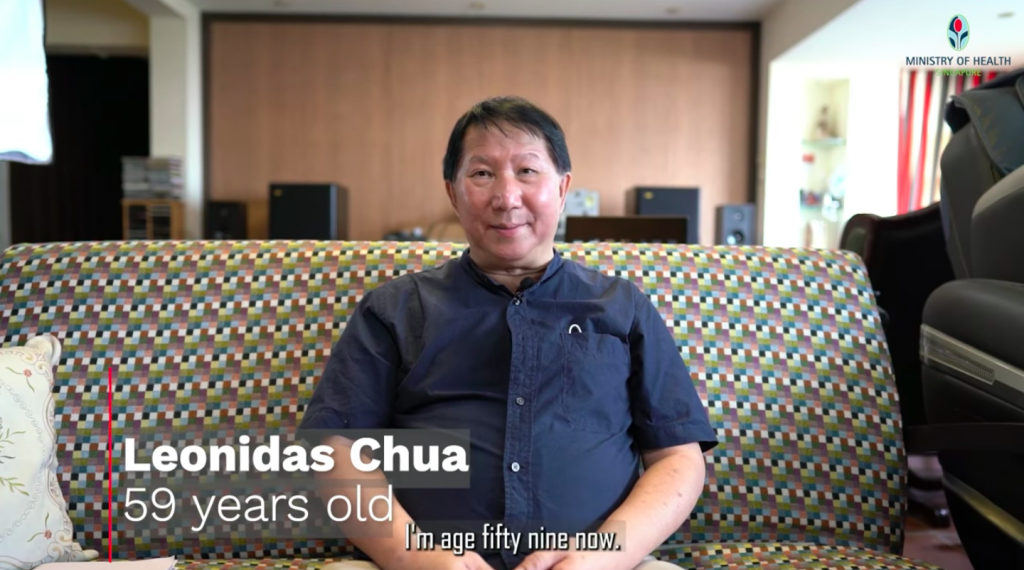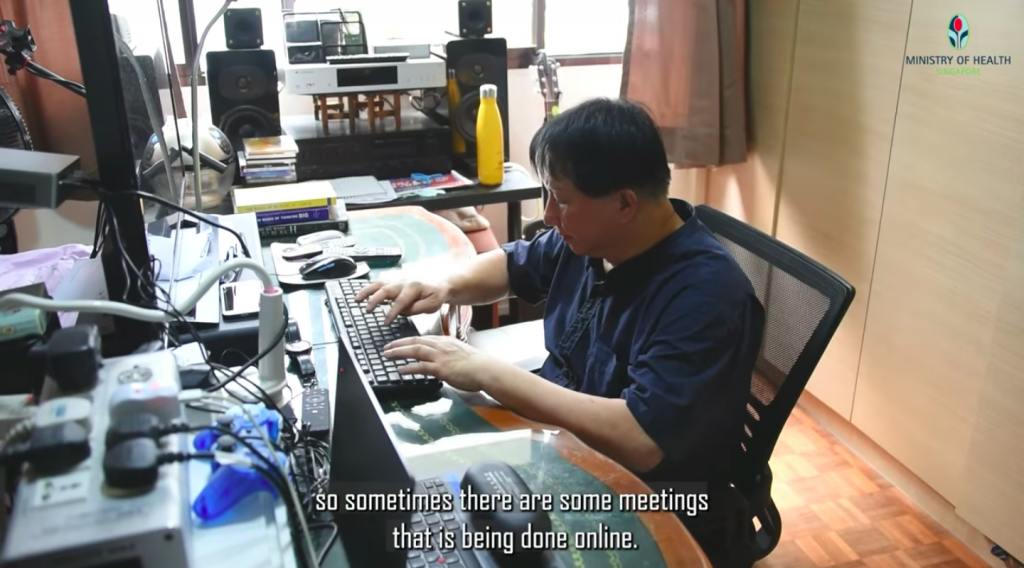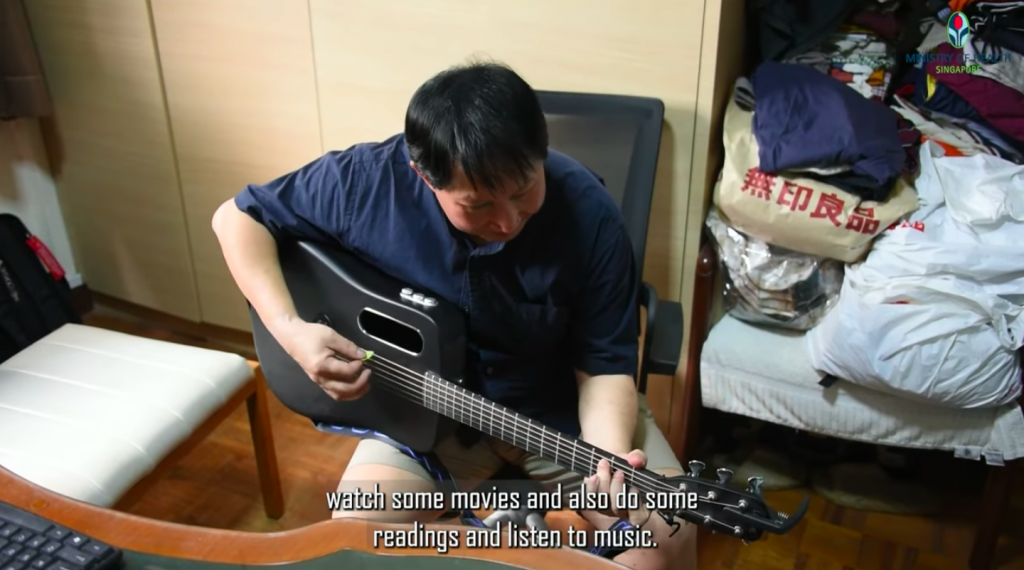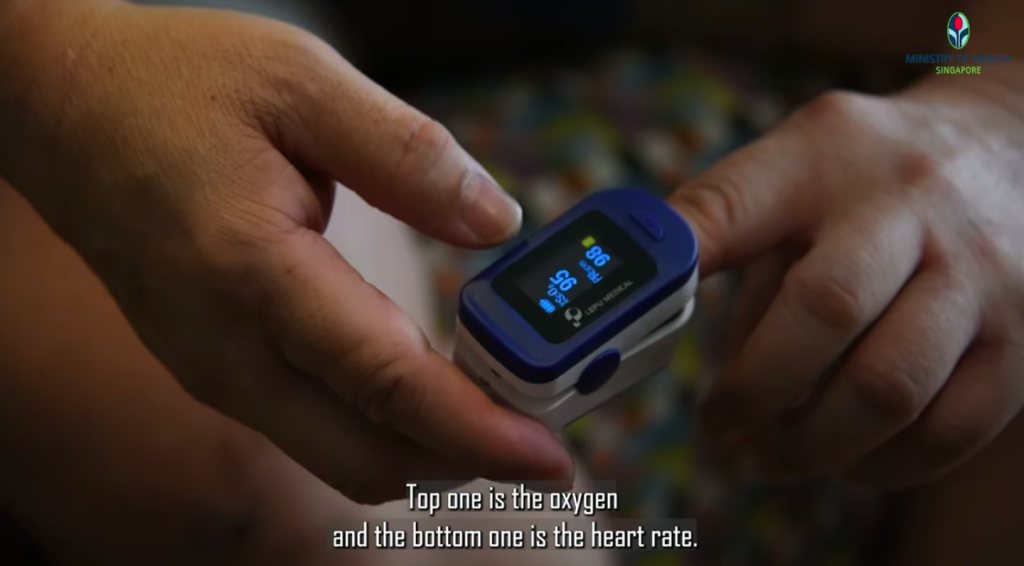With the COVID-19 cases hitting a new daily record in Singapore the past few days, the government has rolled out the COVID-19 Home Recovery Programme for those who are fully vaccinated, aged between 12 and 69, and have no severe illnesses.
This programme helps to reduce the strain on hospitals and allows them to focus all of their resources on those who require immediate medical attention instead.
Since there is still some uncertainty about how the programme works, Minister for Health Ong Ye Kung decided to upload a video on Facebook detailing the process of the programme based on the firsthand experience of one of the COVID-19 patients, 59-year-old Mr Leonidas Chua.
Testing Positive & Home Recovery Buddy

Mr Chua first took an Antigen Rapid Test (ART) by chance and realised that he had tested positive. Despite being worried, he stayed calm and went down to a clinic to seek advice.
He was then asked to take a Polymerase Chain Reaction (PCR) test, and by the afternoon, it was confirmed that he was a COVID-19 patient.
Those who are eligible for the Home Recovery Programme will be issued a 10-day Isolation Order via SMS, and they will have to isolate themselves in a room with an attached toilet.
In the SMS, patients would have to click on the link to provide their personal details to kickstart the programme. Their family members will also have to register themselves as close contacts so that they will be issued an electronic Quarantine Order via SMS.
Mr Chua shared that he was given a pack with all relevant instructions inside. This way, he knew exactly what to do and what not to do during the course of his isolation order.

During Home Recovery

During his self-isolation, Mr Chua continued to work from home and attend online meetings. When he was not working, he would watch a few movies, play his guitar and do some reading.

Other than carrying out activities that he would do prior to testing positive, he had to monitor three readings daily – his body temperature, pulse rate, and oxygen level.
The latter two were easy to measure with the oximeter that was given for free to every household. All he had to do was slip his index finger into the oximeter and press the switch. Soon, the top reading would show his oxygen level and the bottom reading would show his pulse rate.

After taking note of these readings, he simply had to log them into his Home Recovery Vitals Diary at 10am each day. This diary could be accessed by scanning a QR code that was printed on his booklet.
While everyone is offered the telemedicine service in case they feel unwell during their Home Recovery Programme, Mr Chua did not need to make use of it.
He revealed that he felt fine and that he did not have any symptoms at all throughout the programme. He also shared that the readings that he took daily were all “well within a normal person’s requirements”.
Getting Food
Another concern for many people about the Home Recovery Programme is how they were going to get access to food without asking the help of their family members, for fear of giving them additional pressures.
Mr Chua said that he usually did either of two things – cook his meal himself or order his food online using the various delivery platforms available.
When he orders his food online, he makes sure to also include a message that tells delivery agents to leave the food outside. Once they are done, they just have to ring the doorbell and they can leave.

After the delivery agent is no longer there, Mr Chua will don a surgical mask, unlock his gate and bring in his freshly-arrived food.
Family Support & Tips
When asked about how his loved ones supported him during this programme, Mr Chua said that his family and friends reassured him and kept his spirits up by telling him that everything will be fine.
This in turn also made him see the positive side of things and feel like he was truly fine.
Mr Chua’s tip was to get vaccinated. He shared that the vaccination allowed his body to “fight the virus more aggressively”. It worked so well for him that he didn’t even feel any symptoms.
Ong Ye Kung’s Comments
While there have been certain lapses in the Home Recovery Programme initially, Mr Ong said that many issues are being resolved now, thanks to “the help of the SAF and everyone stepping up”.
He is glad that currently, more than half of the COVID-19 patients actually get to recover in the comfort of their own homes, and “many had an overall positive experience”.
He ended his post with, “We will keep improving to ensure a smooth home recovery for more. This is critical to our journey living with COVID-19.”
Read Also:
- 9 Facts About FICA, a Foreign Interference Bill That Will Be a Law in S’pore After a 10-Hour Debate
- Ask Jamie Bot from MOH’s Website Gave Safe Sex Advice When People Asked About COVID-19
Featured Image: Facebook (Ong Ye Kung)




